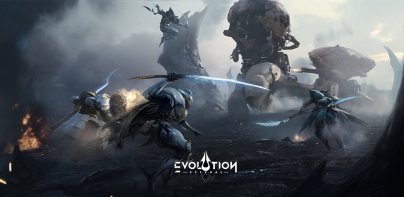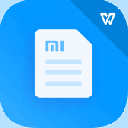










Artificial Intelligence

Description de Artificial Intelligence
The app is a complete free handbook of Artificial Intelligence with diagrams and graphs. It is part of Computer science or software engineering education which brings important topics, notes, news & blog on the subject. The App serves as a quick reference guide on this engineering subject.
It covers more than 600 topics of Artificial Intelligence, Automata, Real-time systems & Neuro fuzzy in detail. The topics are divided into 5 units.
Each topic is complete with diagrams, equations and other forms of graphical representations for better learning and quick understanding. The App will provide faster learning and quick revisions on the subject.
Few Additional subjects which have been included in the app are
Automata
Neural network fuzzy systems
Real-time Systems
Some of the topics Covered in this application are:
1. Turing test
2. Introduction to Artificial Intelligence
3. History of AI
4. The AI Cycle
5. Knowledge Representation
6. Typical AI problems
7. Limits of AI
8. Introduction to Agents
9. Agent Performance
10. Intelligent Agents
11. Structure Of Intelligent Agents
12. Types of agent program
13. Goal based Agents
14. Utility-based agents
15. Agents and environments
16. Agent architectures
17. Search for Solutions
18. State Spaces
19. Graph Searching
20. A Generic Searching Algorithm
21. Uninformed Search Strategies
22. Breadth-First Search
23. Heuristic Search
24. A∗ Search
25. Search Tree
26. Depth first Search
27. Properties of Depth First Search
28. Bi-directional search
29. Search Graphs
30. Informed Search Strategies
31. Methods of Informed Search
32. Greedy Search
33. Proof of Admissibility of A*
34. Properties of Heuristics
35. Iterative-Deepening A*
36. Other Memory limited heuristic search
37. N-Queens eample
38. Adversarial Search
39. Genetic Algorithms
40. Games
41. Optimal decisions in Games
42. minimax algorithm
43. Alpha Beta Pruning
44. Backtracking
45. Consistency Driven Techniques
46. Path Consistency (K-Consistency)
47. Look Ahead
48. Propositional Logic
49. Syntax of Propositional Calculus
50. Knowledge Representation and Reasoning
51. Propositional Logic Inference
52. Propositional Definite Clauses
53. Knowledge-Level Debugging
54. Rules of Inference
55. Soundness and Completeness
56. First Order Logic
57. Unification 58. Semantics
59. Herbrand Universe
60. Soundness, Completeness, Consistency, Satisfiability
61. Resolution
62. Herbrand Revisited
63. Proof as Search
64. Some Proof Strategies
65. Non-Monotonic Reasoning
66. Truth Maintenance Systems
67. Rule Based Systems
68. Pure Prolog
69. Forward chaining
70. backward Chaining
71. Choice between forward and backward chaining
72. AND/OR Trees
73. Hidden Markov Model
74. Bayesian networks
75. Learning Issues
76. Supervised Learning
77. Decision Trees
78. Knowledge Representation Formalisms
79. Semantic Networks
80. Inference in a Semantic Net
81. Extending Semantic Nets
82. Frames
83. Slots as Objects
84. Interpreting frames
85. Introduction to Planning
86. Problem Solving vs. Planning
87. Logic Based Planning
88. Planning Systems
89. Planning as Search
90. Situation-Space Planning Algorithms
91. Partial-Order Planning
92. Plan-Space Planning Algorithms
93. Interleaving vs. Non-Interleaving of Sub-Plan Steps
94. Simple Sock/Shoe Example
95. Probabilistic Reasoning
96. Review of Probability Theory
97. Semantics of Bayesian Networks
98. Introduction to Learning
99. Taxonomy of Learning Systems
100. Mathematical formulation of the inductive learning problem
AI is going to be one of the most important technologies in the coming days. It is a must have study for engineering, computer science, software engineering and other cognitive science students. It also going to be extremely important for mechanical, Automotive & electrical engineering students and Professionals.
Download the app for the introduction to AI and related technology.
L'application est un guide complet et gratuit de l'intelligence artificielle avec des diagrammes et des graphiques. Il fait partie de la science informatique ou d'un logiciel d'éducation d'ingénierie qui apporte des sujets importants, des notes, des nouvelles et blog sur le sujet. L'application sert de guide de référence rapide sur ce génie sujet.
Il couvre plus de 600 sujets de l'intelligence artificielle, Automates, systèmes en temps réel et Neuro floue en détail. Les sujets sont divisés en 5 unités.
Chaque sujet est complet avec des diagrammes, des équations et d'autres formes de représentations graphiques pour un meilleur apprentissage et la compréhension rapide. L'application fournira un apprentissage plus rapide et des révisions rapides sur le sujet.
Peu de sujets supplémentaires qui ont été inclus dans l'application sont
Automates
systèmes flous de réseau neuronal
Systèmes en temps réel
Certains des sujets abordés dans cette application sont:
1. test de Turing
2. Introduction à l'intelligence artificielle
3. Histoire de l'IA
Cycle 4. L'AI
Représentation 5. Connaissance
6. Problèmes typiques AI
7. Limites de l'IA
8. Introduction aux agents
9. Performance Agent
10. Agents intelligents
11. Structure d'agents intelligents
12. Les types de programme d'agent
13. Agents basés But
14. agents fondée sur l'utilité
15. Les agents et environnements
16. architectures Agent
17. Recherche de solutions
18. Les espaces de l'État
19. Graphique Recherche
20. Générique Algorithme Recherche
21. Stratégies de recherche mal informés
22. Largeur-First Search
23. Heuristic Rechercher
24. AÃ ¢ Ë † â € "Recherche
25. Recherche Arbre
26. Profondeur première Recherche
27. Propriétés de la profondeur de recherche d'abord
Recherche 28. Bi-directionnel
29. Recherche Graphiques
30. Stratégies de recherche informées
31. Méthodes de Recherche en connaissance
32. Greedy Recherche
33. Preuve de la recevabilité de A *
34. Propriétés de Heuristique
35. itératif-Approfondir A *
36. Autres Mémoire recherche heuristique limitée
37. N-Queens eample
38. Adversarial Recherche
39. Algorithmes génétiques
40. Jeux
41. décisions optimales dans Jeux
algorithme 42. minimax
43. Alpha Beta Elagage
44. Backtracking
45. Cohérence Driven Techniques
46. Chemin de cohérence (K-cohérence)
47. Look Ahead
48. Logique propositionnelle
49. Syntaxe du calcul propositionnel
50. Représentation des connaissances et raisonnement
51. Logique propositionnelle Inference
52. Clauses Definite propositionnelle
53. Connaissance niveau Debugging
54. Règles de Inference
55. Solidité et Complétude
56. Premier Ordre logique
57. Unification 58. Sémantique
59. Herbrand Universe
60. Solidité, complétude, cohérence, Satisfiability
61. Résolution
62. Herbrand Revisited
63. Preuve que Recherche
64. Certaines stratégies Proof
65. Raisonnement non monotones
66. Maintenance Systems Vérité
67. Systèmes règle basée
68. Pur Prolog
69. Forward chaînage
70. chaînage arrière
71. Choix entre chaînage avant et arrière
72. ET / OU arbres
73. Modèle de Markov Caché
74. Les réseaux bayésiens
75. Questions d'apprentissage
76. Apprentissage Supervisé
77. Arbres de décision
78. Connaissances formalismes de représentation
79. Réseaux sémantiques
80. Inference dans un réseau sémantique
81. Extension de réseaux sémantiques
82. Cadres
83. Slots comme objets
84. Les cadres d'interprétation
85. Introduction à la planification
86. Résolution de problèmes par rapport à la planification
87. Logique planification fondée
88. Systèmes de planification
89. Planification de la recherche
90. Situation de l'espace Algorithmes de planification
Planification 91. partielle-Order
92. Plan-espace Algorithmes de planification
93. entrelacée et non-entrelacée du Sous-plan Étapes
94. Simple Sock / Exemple de chaussure
95. Le raisonnement probabiliste
96. Examen de la théorie des probabilités
97. Sémantique des réseaux bayésiens
98. Introduction à l'apprentissage
99. Taxonomie des systèmes d'apprentissage
100. Formulation mathématique du problème d'apprentissage inductive
AI va être l'une des technologies les plus importantes dans les prochains jours. Il est une étude doit avoir pour l'ingénierie, de l'informatique, le génie logiciel et d'autres étudiants en sciences cognitives. Il va aussi être extrêmement important pour les étudiants et les professionnels de l'ingénierie mécanique, automobile et électrique.
Téléchargez l'application pour l'introduction à l'IA et des technologies connexes.




























